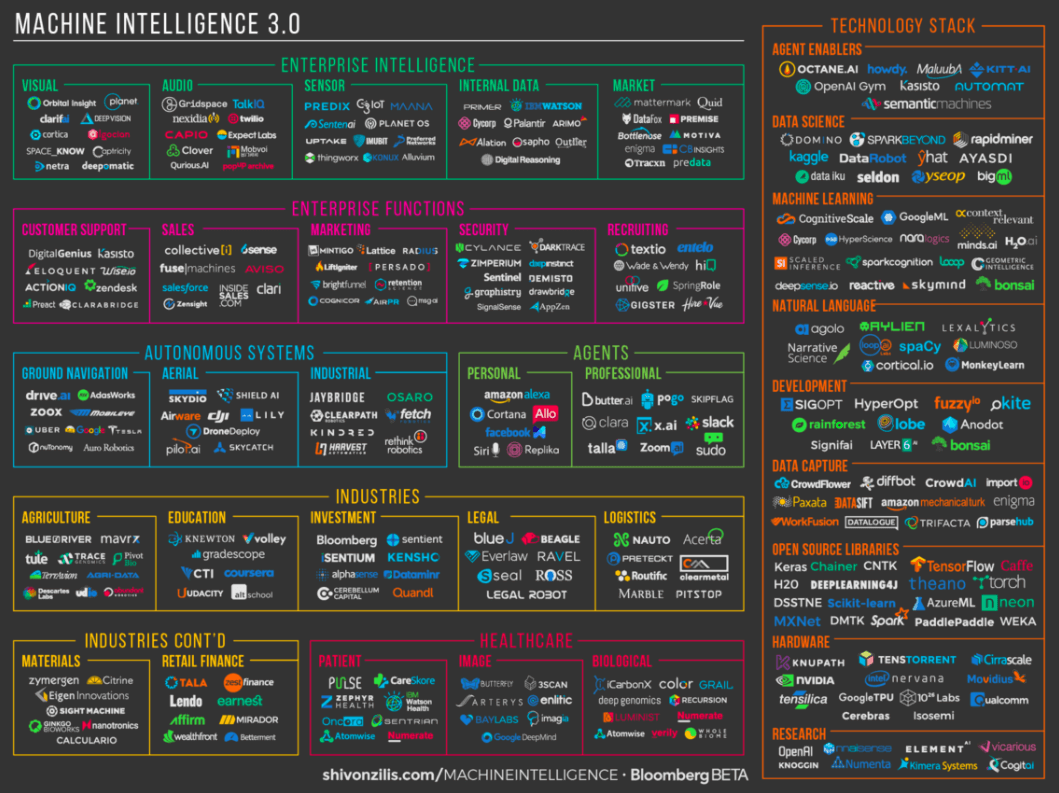Automation. From assembly lines to cubicles, this word strikes fear into the heart of workers the world over. However, automation’s effect on creative professionals (and designers in particular) is somewhat unclear: While some writers warn of a day in the near future when computers will automate creativity, still others hypothesize that creativity may be our best (and last) defense against the widespread loss of jobs.
So which will it be? Should designers fear the machines? Or should they embrace them?
In order to determine how automation will affect designers, it’s important to examine several factors and developments: First, what types of jobs are most likely to be automated; second, the rise of new technologies (and how these functions will affect us); and lastly, the template for a new way forward that can combine human minds with machine learning.
Are design jobs likely to be automated?
You don’t have to look very far in order to find professions that have been (or will be) automated: factory workers, traders on the floors of stock exchanges, and, if Uber and Google have their way, long-distance truckers and taxi drivers. At first glance, these professions are spread all across separate industries with little in common.
June 5th: The AI Audit in NYC
Join us next week in NYC to engage with top executive leaders, delving into strategies for auditing AI models to ensure fairness, optimal performance, and ethical compliance across diverse organizations. Secure your attendance for this exclusive invite-only event.
As a result, it’s helpful to look at the nature of the duties performed, rather than the roles themselves. A 2016 McKinsey report lays it out quite clearly: the most vulnerable professions are the ones that require rote work (both physical and mental), data collection and processing, and a degree of repetition. Therefore, one of the best indicators of automatability lies in determining how much time is spent on predictable activities that are easily duplicated by machine programming.
At our current level of technology, it appears that the best defense against automation is creativity. Specifically, here are a few of the criteria to consider. Your job is not in danger if your daily duties require high-level skills (such as unorthodox thinking and imagination), involves intensive interactions with clients and coworkers (for all their complexity, machines have yet to evolve soft skills), and are carried out amid volatile, unstable conditions (changing parameters and assignments that require a lot of adaptability).
By that metric then, the job of designers is not easily automated — if it is automated at all. Working off methodology from a previous Oxford study, NPR researchers assessed nine competencies across a range of professions, including persuasion, negotiation, originality, fine arts, and social perceptiveness, among others. Based on the percentage of work split between these criteria, NPR estimates that graphic designers face an 8.2 percent chance of automation, whereas art directors have only a 2.3 percent chance of being replaced by machines.
Don’t be complacent: deep learning
Still, this methodology isn’t foolproof, as there is a huge caveat: machine learning.
As the name suggests, machine learning is the ability of computers to learn and build new skills in areas where they have no existing knowledge. Among the subsets of machine learning, the most relevant (at least to creative professionals and Go or chess champions) is deep learning, built on complex mathematical structures called neural networks, designed to mimic human brains. Arguably, the most famous is Google’s AlphaGo; in 2016, this deep learning program bested the top Go players in the world, racking up an impressive string of consecutive victories with its bold, fast-moving play style.
But beyond simple headlines, there are a number of reasons why AlphaGo’s victory should concern designers. First, Go itself is a notoriously abstract, multi-faceted game with an infinite number of permutations; as such, Go demands flexibility, intuition, and experience — much like design. For instance, DeepBlue, the famous chess program that defeated grandmaster Garry Kasparov in 1997, relied on brute computing power to calculate possible plays; AlphaGo, on the other hand, learned by playing itself thousands of times and by honing its lateral, unorthodox thinking.
And machine learning is already being applied to design. Adobe, which radically restructured the design industry through its programs, has embarked on another, far more ambitious project: automating graphic and web design. Known as Sensei, its deep learning algorithms could instantly customize user content, such as filtering for conditions like gluten or lactose intolerance; re-imagining user interfaces based on previous behavior; and creating an overall seamless, smooth process — at least on the individual level. Yet at its current capabilities, Sensei isn’t advanced enough to replace designers outright; after all, it can only crop and make minor visual changes, and can’t yet master elements like editing for taste.
Even so, automated creativity isn’t far off. Two years ago, advertising powerhouse M&C Saatchi debuted an innovative ad campaign, a single digital display with a built-in camera to track audience response. Uniquely, this display relied solely on algorithms to assess effective design elements like copy, word length, fonts, sizes, and layouts, testing them in real time on passerby. Though executives insisted that the value of the display lies in gathering data under real-world conditions, an advanced variant of this algorithm could conceivably design better than a human: After all, it would know from extensive research which features are most likely to appeal to audiences, and can execute ads far more quickly than its human counterparts.
Towards a new future: augmented design
But it’s not all doom and gloom. Rather than forcing humans out of design jobs entirely, algorithms could augment human abilities.
Essentially, these augmented intelligences could take away the mind-numbing routine of lower-level duties, freeing up designers to focus on high-level tasks. As the name suggests, augmented intelligences, unlike artificial intelligences like AlphaGo, aren’t standalone deep learning programs; instead, they work in tandem with a human partner. Think of the humble calculator: Rather than putting mathematicians out of work, calculators instead allowed them to work faster, spending less time solving equations and more time focusing on framing the problem, thinking creatively, and evaluating or modifying results.
More importantly, there are some clear roles that augmented intelligences could play, according to MIT’s Michael Schrage. For designers, the most relevant involve your consultants and colleagues. Consultant intelligences could help designers get around sticky problems, using A/B testing or analytics to plot the best course of action. On the other hand, colleague intelligence could provide design context by instantly browsing through thousands of case studies; such a program could list successful design elements in similar projects, crunch numbers to track engagement and user buy-in, and offer recommendations.
We’ve been here before
In fact, partial automation offers a template for the future of design. Prior to the rise of desktop design systems like Adobe Creative Suite or QuarkXPress, design involved tedious elements, such as typesetting and typography, which were carried out by compositors. After the advent of these groundbreaking systems, typographer and compositors were replaced entirely by graphic designers.
Seen in that light, it’s incredibly important to create robust job training programs. Rather than traditional educational institutions (four-year colleges or postgraduate degrees), it may be more sensible to invest in shorter-term, intensive courses, such as coding bootcamps or 12-week design schools.
Ultimately, though machine learning and AI could well replace designers, if we execute careful implementation and planning, computers could instead supplement humans, allowing for more creativity, more expression, and best of all, more flow.
After all, we’ve already seen this happen before. As the saying goes, history doesn’t repeat itself — but it does rhyme.
Anthony Wood is the global managing director of Shillington Education, a comprehensive, immersive design school that transforms career changers and recent grads into full-fledged designers within the span of 3-9 months.



